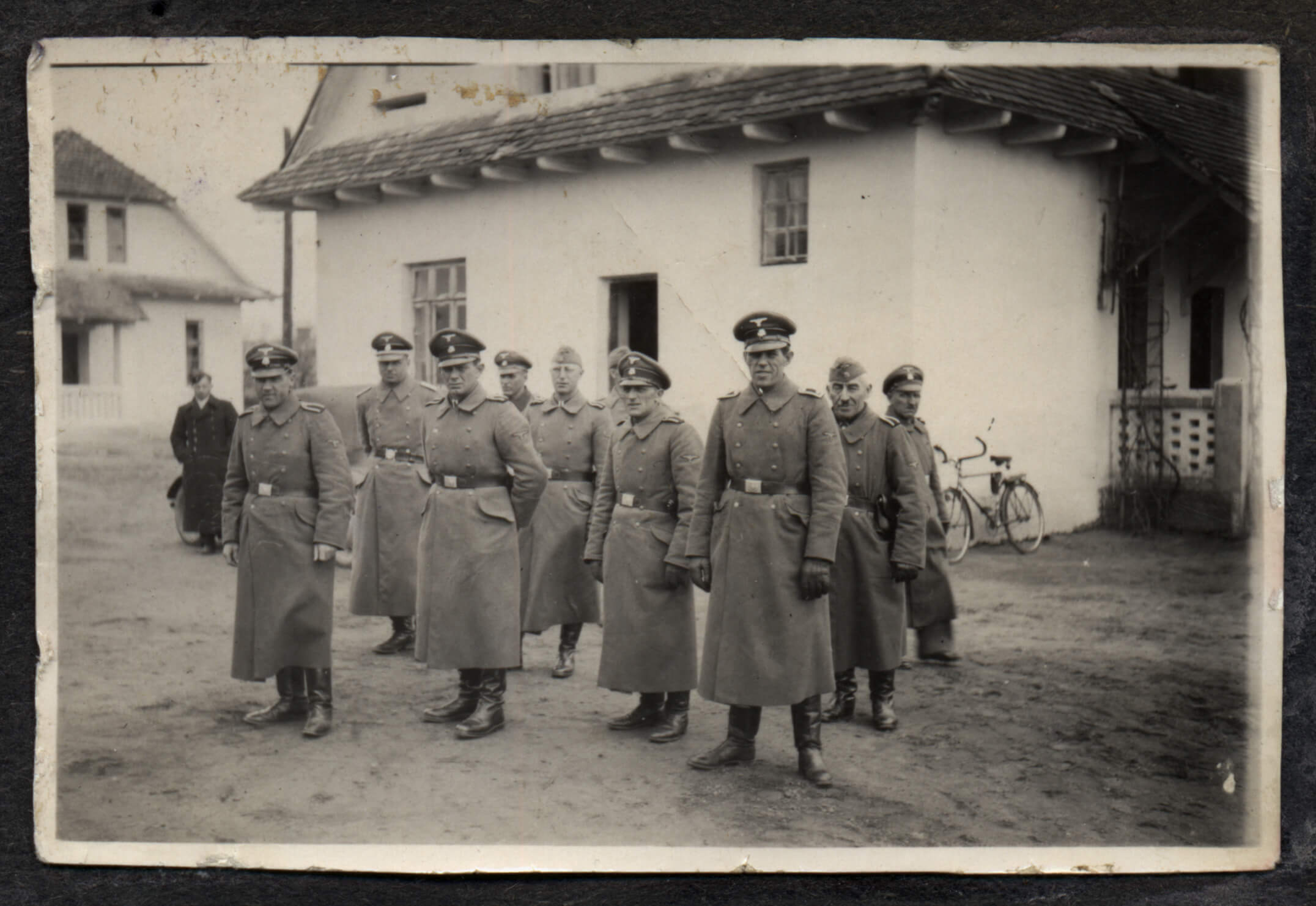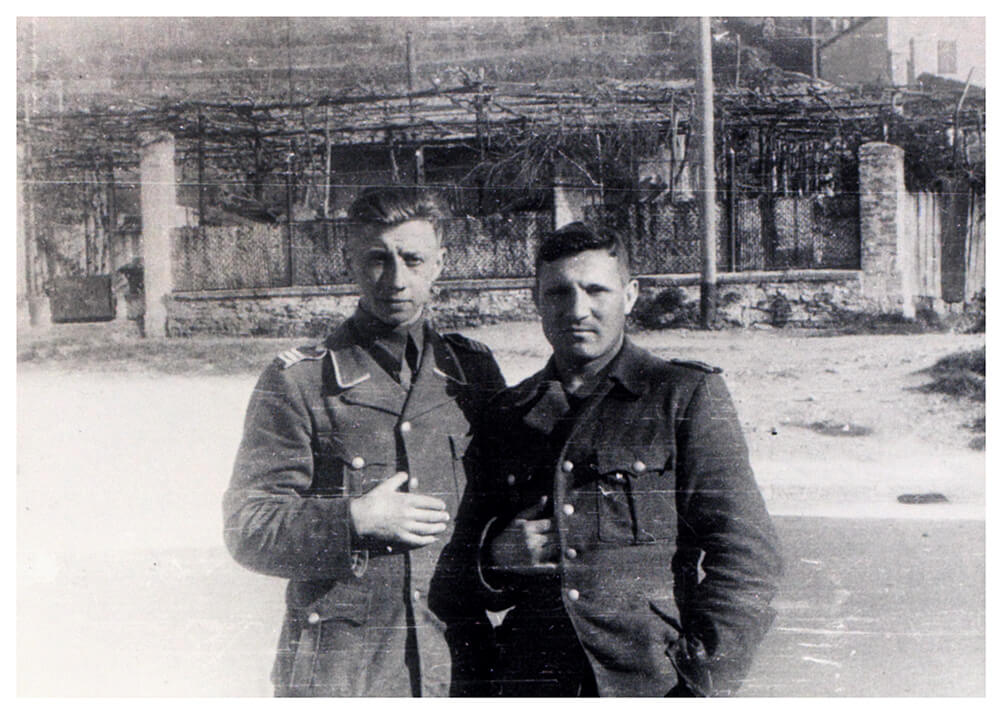Bełźec

Some of the SS staff in front of the building in which camp commandant Christian Wirth lived and held office.
Staatsarchiv MünchenBełźec was the first extermination camp to be established as part of Operation Reinhard. A labour camp was initially set up there at the beginning of 1941. Work commenced on the construction of a killing centre in late 1941 and early 1942. Everything was prepared for the camp to be put into operation by the end of February. The former anti-tank ditches were to be used as mass graves. Christian Wirth was appointed the first commandant of the camp, thanks largely to his experience at the Euthanasia killing centres and the Chełmno death camp. Most of the staff were transferred from the T-4 gassing operation, while the rest consisted of Ukrainian guards who had received their training in Trawniki. The camp was divided into two parts: the administration area and the extermination area. A narrow passageway known as the “Schlauch” (tube) connected the undressing barracks to the gas chambers. The gas (carbon monoxide) came from an engine inside a shed next to the building. There were originally three gas chambers at the camp, but they soon proved to be of insufficient capacity. They were then dismantled and a new facility with six gas chambers was erected, which could handle between 1,000–1,200 victims at a time. The camp ceased operations at the end of December 1942. The process of opening the mass graves and burning the bodies began at the beginning of 1943. An incineration grate made from railroad tracks was used for this purpose. Evidence of the camp was gradually wiped out. The last 600 prisoners who had helped with the cremation were gassed in Sobibór. A farm inhabited by two Ukrainians was built on the site of the former camp. Post-war testimony about Bełżec was provided by Rudolf Reder, a Polish Jew who was one of the two survivors of the camp. It is estimated that 600,000 victims were killed at this extermination camp. Czech Jews from the ghettoes and labour camps of the Lublin district were deported to Bełźec.
